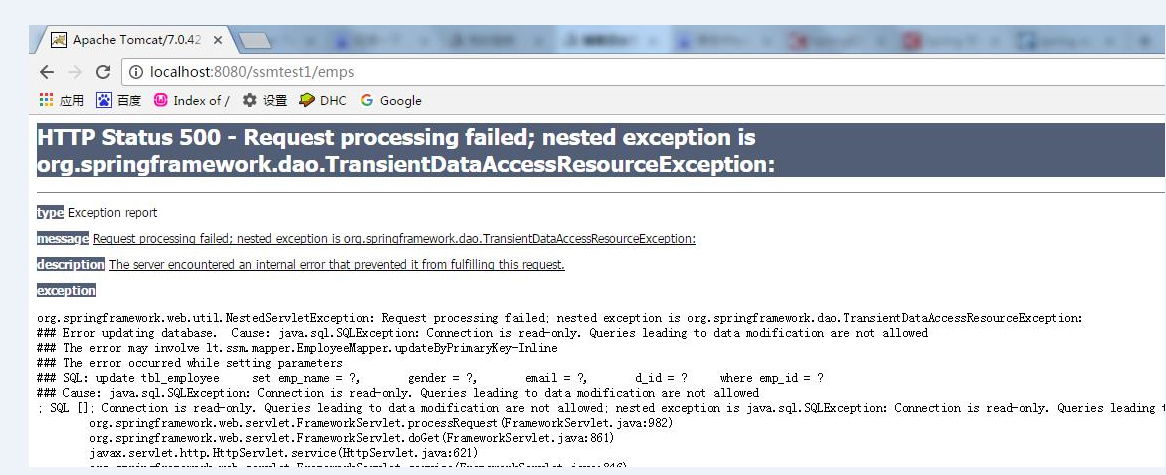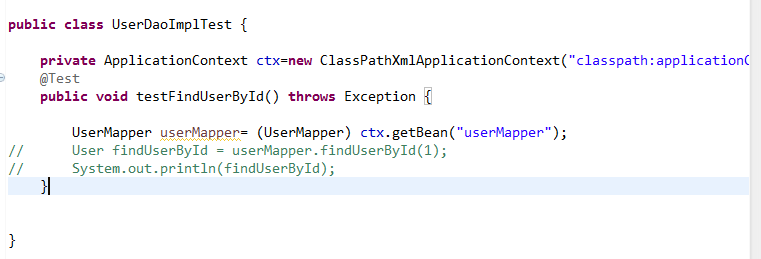spring配置事务两种方式1,注解@Transactional2.xml方式
下面主要对xml方式配置spring事务进行说明
原理:使用aop(面向切面编程)对springz中的事务进行管理(同一session下完成一项不可细分的功能/业务需求)
主要分3部
(1)添加transactionManager事务管理器(aop中的切面)
(2)配置事务属性(事务隔离级别,传播级别,是否只读)
(3)配置事务切入点,并将切入点与属性关联
<?xml version="1.0" encoding="UTF-8"?> <beans xmlns="http://www.springframework.org/schema/beans" xmlns:xsi="http://www.w3.org/2001/XMLSchema-instance" xmlns:tx="http://www.springframework.org/schema/tx" xmlns:aop="http://www.springframework.org/schema/aop" xsi:schemaLocation="http://www.springframework.org/schema/aop http://www.springframework.org/schema/aop/spring-aop-4.3.xsd http://www.springframework.org/schema/beans http://www.springframework.org/schema/beans/spring-beans.xsd http://www.springframework.org/schema/tx http://www.springframework.org/schema/tx/spring-tx-4.3.xsd"> <!-- 事务管理器 --> <bean id="transactionManager" class="org.springframework.jdbc.datasource.DataSourceTransactionManager"> <property name="dataSource" ref="dataSource"></property> </bean> <tx:advice id="txAdvice" transaction-manager="transactionManager"> <tx:attributes> <!-- 配置事务传播行为 规范事务crud方法规范 --> <tx:method name="save*" propagation="REQUIRED" /> <tx:method name="delete*" propagation="REQUIRED" /> <tx:method name="update*" propagation="REQUIRED" /> <tx:method name="insert*" propagation="REQUIRED" /> <tx:method name="select*" propagation="SUPPORTS" /> <tx:method name="find*" propagation="SUPPORTS"/> <tx:method name="get*" propagation="SUPPORTS"/> <tx:method name="select*" propagation="SUPPORTS"/> <!-- <tx:method name="get*" propagation="REQUIRED" read-only="true" /> --> </tx:attributes> </tx:advice> <!-- 配置事务切入点 --> <aop:config> <aop:advisor advice-ref="txAdvice" pointcut="execution(* lt.ssm.service.*.*(..))" /> </aop:config> </beans>
如果tx:method中没有注明的方法在service中出现,name不会为该方法添加事务,不过一般不这么做

如果出现了上述界面,则事务属性配置出现了问题
使用原生的mybatis执行数据库操作
private SqlSessionFactory sessionFactory=new SqlSessionFactoryBuilder().build(OrdersCustomTest.class.getClassLoader().getResourceAsStream("mybatis-config.xml")); @Test public void testFindOrdersUser() throws Exception { SqlSession sqlSession = sessionFactory.openSession(); OrdersCustom mapper = sqlSession.getMapper(OrdersCustom.class); List<OrdersCustom> findOrdersUser = mapper.findOrdersUser(); System.out.println(findOrdersUser); sqlSession.commit(); sqlSession.close(); }
一般需要的步骤
1.通过mybatis.xml配置文件创建sessionFactory
2.通过sessionFactory创建sqlSession
3.通过sqlSession获取动态mapper(动态代理)
4.执行sql
5.提交事务(sqlSession在执行cud的时候回自动开启事务,select不需要提交)
6.关闭连接
//如果sqlsessionFactory.opensession(true)参数是布尔值,如果设置为true,就不需要commit提交事务了
SqlSession sqlSession = sqlSessionFactory.openSession();//openSession打开会话,事务处理开始
以上过程中第开启事务,提交,回滚事务,关闭连接都可以使用aop动态代理自动完成,创建sessionfactory和sqlSession可以由spring注入,所以需要做的工作只有在服务层中调用相关dao(mapper)方法,并为方法其添加相应通知.因此所有涉及到cud方法都要为其添加事务,查询方法不用开启事务
 使用spring将动态代理产生的mapper注入到ioc中
使用spring将动态代理产生的mapper注入到ioc中
这里没有关闭sqlSession(这里我也不清楚,到底是在动态代理执行close,还是在其他地方关闭)